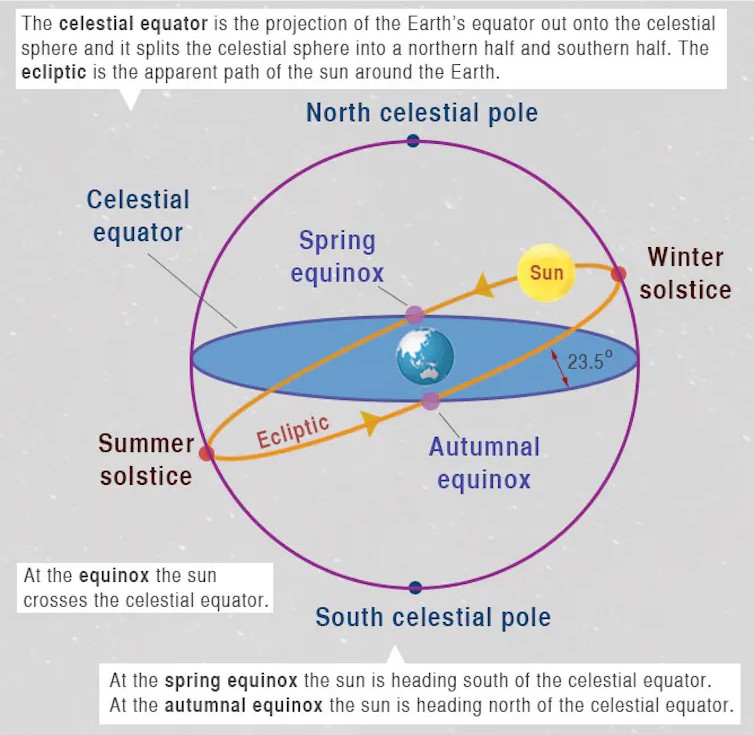Southern Hemisphere's equinox

The Southern Hemisphere's equinox, also known as the "spring equinox" and the "autumn equinox," depending on the time of year, is a significant astronomical event that occurs twice a year. These equinoxes mark the transition between seasons in the Southern Hemisphere:
Spring Equinox (Southern Hemisphere): The spring equinox in the Southern Hemisphere typically occurs around September 22nd or 23rd. During this time, the plane of the Earth's equator passes through the center of the Sun, making day and night approximately of equal length. This event marks the beginning of spring in countries located south of the equator. As the Earth's tilt relative to the Sun changes, the Southern Hemisphere experiences increasing daylight hours and warming temperatures, leading to the emergence of new plant life and the onset of milder weather.

Autumn Equinox (Southern Hemisphere): The autumn equinox in the Southern Hemisphere usually takes place around March 20th or 21st. Similar to the spring equinox, day and night are nearly equal in duration during this event. The autumn equinox signals the start of autumn in the Southern Hemisphere. As the Southern Hemisphere tilts away from the Sun, days become shorter, temperatures begin to cool, and trees shed their leaves in preparation for the winter months.

These equinoxes are essential for maintaining seasonal balance on Earth and are celebrated in various cultures as they signify the changing of seasons and the transition from one phase of the year to another in the Southern Hemisphere.








